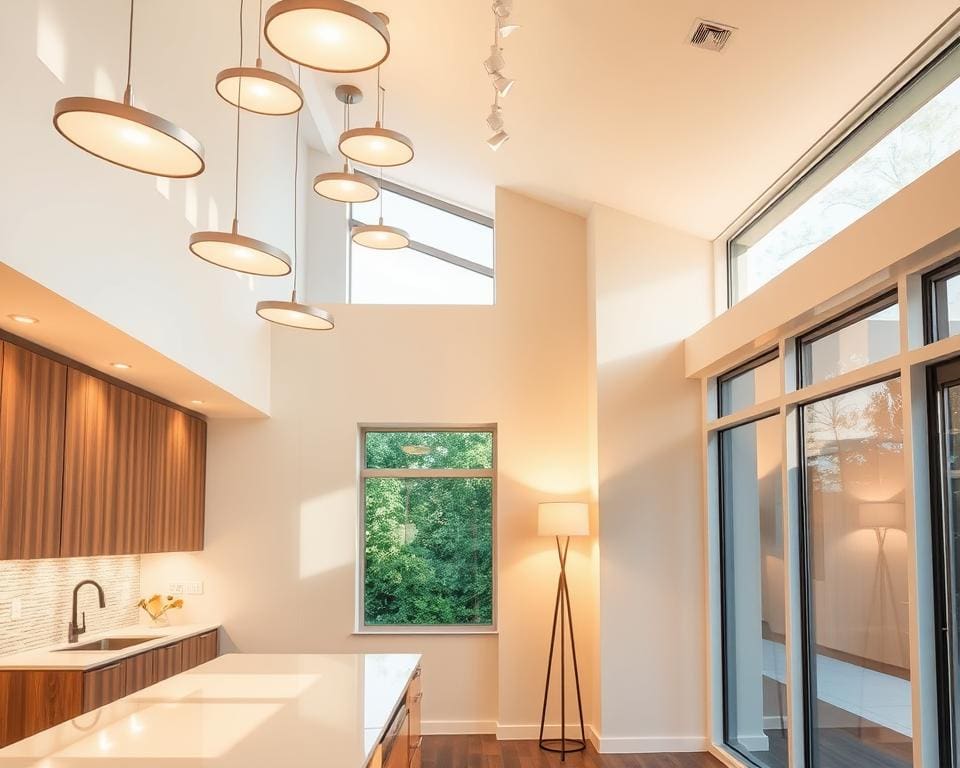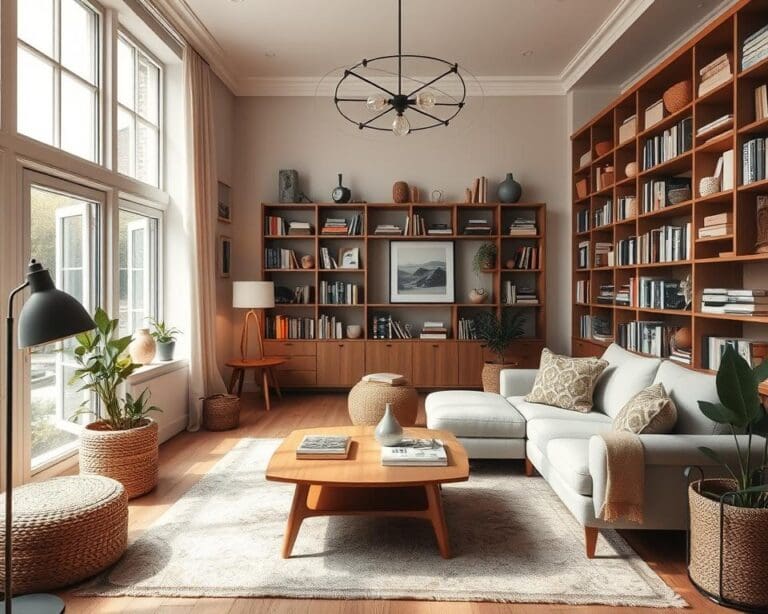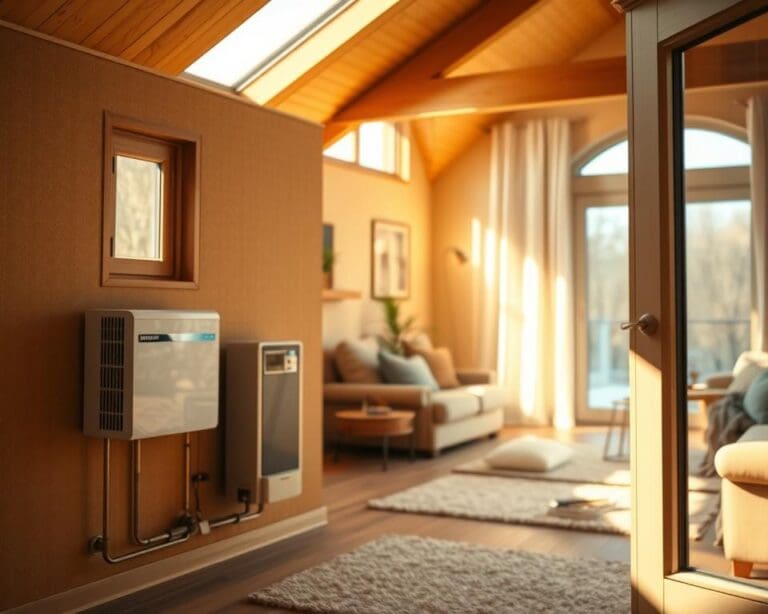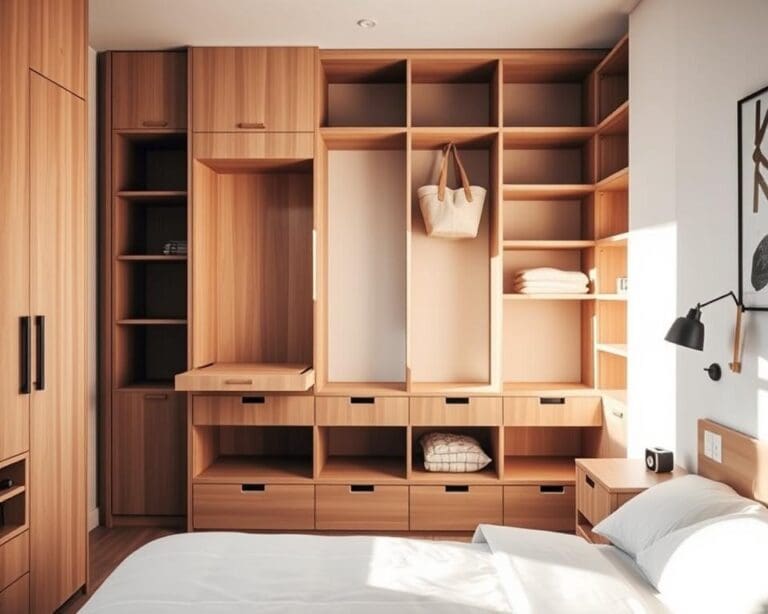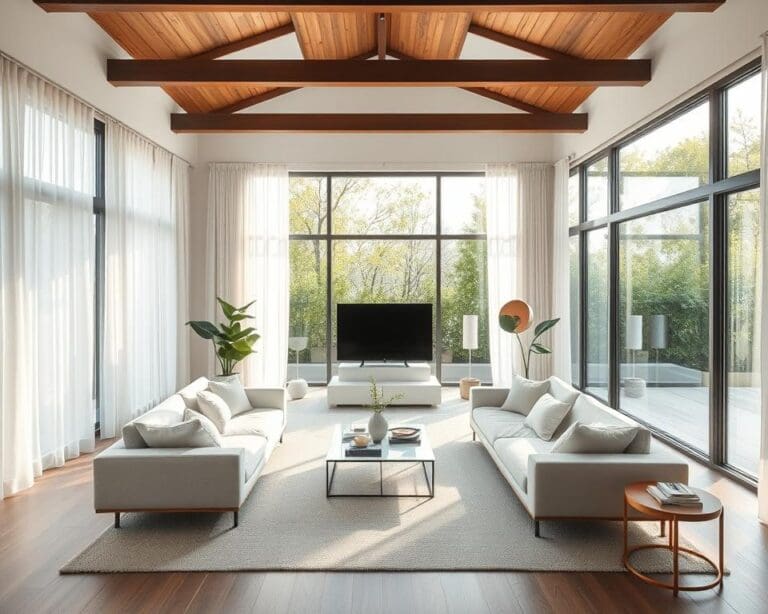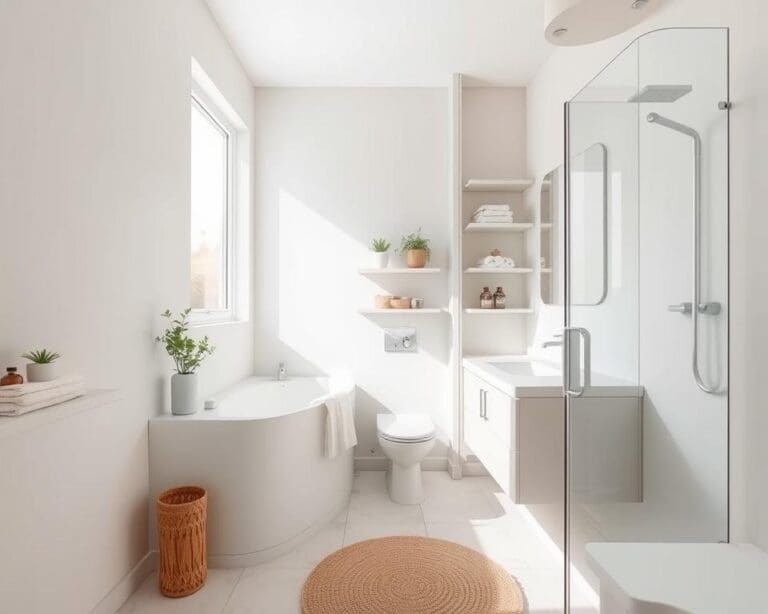In the world of interior design, open-plan kitchens have emerged as a quintessential choice for contemporary homes, offering an elegant blend of space and functionality. Optimal kitchen illumination is vital in such settings, as it not only enhances the overall atmosphere but also highlights the seamless transitions between cooking and living areas. As we delve into modern lighting design, this article will unveil a variety of kitchen lighting ideas tailored specifically for open-plan layouts. Discover how the right lighting can transform your kitchen into a stylish and practical space.
Understanding the Importance of Lighting in Open-Plan Kitchens
Lighting serves a vital role in transforming open-plan kitchens, influencing both the atmosphere and the practicality of the space. The lighting impact on kitchen mood lighting can define how inviting or functional a kitchen feels during different times of the day. With the right illumination, a kitchen becomes more than a cooking space; it evolves into a gathering focal point for friends and family.
How Lighting Affects Mood and Functionality
Bright lighting can energise a kitchen, making it feel spacious and welcoming, while softer lighting creates a soothing ambience ideal for relaxation. By adjusting the intensity and direction of the light, homeowners can curate the perfect atmosphere, enabling various activities whether cooking, dining, or entertaining. The approach to lighting directly relates to the functionality in kitchen design, where different settings require tailored lighting solutions to enhance usability and comfort.
Different Types of Lighting Sources
Understanding the types of lighting sources available can greatly influence the effectiveness of kitchen design. Primarily, lighting can be divided into three categories:
- Ambient Lighting: This provides general illumination for the entire kitchen, establishing a base level of brightness necessary for comfortable navigation.
- Task Lighting: Focusing specifically on work areas such as countertops or the sink, this lighting ensures visibility and reduces strain during food preparation.
- Accent Lighting: Primarily decorative, this lighting highlights specific architectural features or focal points, such as artwork or stylish backsplashes.
Key Lighting Types for Modern Open-Plan Kitchens
In designing a modern open-plan kitchen, selecting the right lighting is essential for both functionality and aesthetics. The combination of ambient, task, and accent lighting creates a well-rounded kitchen atmosphere. Each lighting type plays a significant role in enhancing the overall experience of the space.
Ambient Lighting: Creating a Warm Atmosphere
Ambient lighting serves as the foundation for any well-lit kitchen. Often provided by ceiling fixtures or recessed lights, these ambient lighting solutions create a warm, inviting environment. They allow for a general illumination that fills the room, making the kitchen a pleasant space for both cooking and socialising.
Task Lighting: Focusing on Functional Areas
Task lighting is crucial for areas where specific functions occur. Effective task lighting examples, such as under-cabinet lights or pendant lights above work surfaces, ensure that essential tasks like chopping vegetables or reading recipes are performed safely and efficiently. By illuminating counters and islands, task lighting enhances both usability and safety in the kitchen.
Accent Lighting: Highlighting Architectural Features
Accent lighting in kitchens brings attention to architectural elements and decor features. This type of lighting can include LED strips or spotlights strategically placed to showcase open shelves, artwork, or unique design details. By enriching the kitchen atmosphere, accent lighting adds a touch of personality and style.
What lighting suits modern open-plan kitchens?
Creating the perfect lighting design in an open-plan kitchen involves various factors that cater to both functionality and aesthetics. By considering layout, ceiling height, and natural light sources, homeowners can establish a space that meets their specific needs. Applying thoughtful lighting selection criteria helps ensure that all areas receive adequate illumination while enhancing the kitchen’s overall appeal.
Factors to Consider in Lighting Selection
When evaluating lighting options, several key aspects come to the forefront:
- Layout: The size and shape of the kitchen dictate how light is distributed across the space.
- Ceiling Height: High ceilings may benefit from hanging fixtures or recessed lights to create a balanced atmosphere.
- Natural Light: Assessing the amount of ambient daylight can influence the need for additional artificial lighting.
Adjustable Lighting Solutions for Versatile Spaces
Incorporating adjustable lighting options, such as dimmers and smart lighting systems, offers significant advantages for modern kitchens. These flexible kitchen lighting solutions enable homeowners to tailor the environment according to different occasions. Whether preparing a meal or hosting a gathering, having the ability to modify illumination levels contributes to a welcoming atmosphere. Versatile home lighting solutions cater to various activities throughout the day, enhancing both functionality and style in the kitchen.
Trendy Lighting Fixtures for Open-Plan Designs
As modern kitchens evolve into open-plan spaces, the selection of trendy kitchen fixtures becomes critical in achieving both functionality and aesthetic appeal. Two popular choices that seamlessly blend style and practicality are pendant lights and spotlights. Each brings its own unique charm to a contemporary kitchen setting, contributing to overall ambience and design coherence.
Pendant Lights: Stylish Centrepieces
Pendant light designs have gained popularity as they double as functional lighting and striking decorative elements. Whether positioned above a kitchen island or dining area, these fixtures act as stylish centrepieces that draw the eye and enhance the room’s character. A variety of styles are available, from sleek and simple to bold and industrial, catering to diverse tastes. This versatility allows homeowners to express their individuality while adhering to modern lighting trends.
Spotlights: Enhancing Architectural Elegance
Incorporating spotlights involves thoughtful spotlight installation to achieve direct illumination in key areas. These fixtures not only provide essential light where it’s needed most but can also accentuate architectural features, highlighting the elegant lines and details of a kitchen. Their focused beams create drama and dimension, making them an essential part of contemporary kitchen lighting strategies. Both pendant lights and spotlights transform open-plan designs, making them not just functional spaces, but inspiring hubs of creativity.
Energy Efficiency and Modern Lighting Solutions
Embracing energy-efficient lighting has become essential for both reducing costs and protecting the environment. The shift towards LED technology exemplifies this movement, delivering numerous benefits while enhancing modern kitchen aesthetics.
Benefits of LED Lighting
LED lights have revolutionised kitchen illumination with their remarkable energy efficiency. These lights consume significantly less power than traditional incandescent bulbs, leading to considerable savings on electricity bills. Noteworthy LED benefits include a longer lifespan, reducing the need for frequent replacements and maintaining consistent lighting quality. With their versatility, LEDs can easily fit into various lighting designs, ensuring that your kitchen looks stunning while being efficient.
Smart Lighting: Embracing Technology
Incorporating smart kitchen lighting enhances functionality through advanced technology in lighting design. Homeowners can control their lighting systems via smartphone applications or voice commands, granting unparalleled convenience. This modern approach allows for tailored lighting settings, optimising energy usage based on real-time needs. The adaptability of smart lighting systems ultimately champions both ease of use and energy savings, making it a perfect fit for contemporary kitchens.
Creating a Cohesive Aesthetic with Lighting
Achieving cohesive kitchen aesthetics requires thoughtful integration of lighting fixtures with existing design styles. Whether opting for modern, rustic, or industrial elements, selecting matching lighting styles enhances the overall beauty of the kitchen. This alignment fosters a sense of kitchen design harmony, bringing all components together seamlessly.
Matching Fixtures with Kitchen Design Styles
When selecting lighting, it is essential to consider the overall design theme of the kitchen. A few effective approaches include:
- Choose fixtures that reflect the materials used in cabinetry and countertops.
- Select colours and finishes that harmonise with the kitchen’s palette.
- Incorporate various lighting elements, such as pendant lights or sconces, that complement design features.
Such attention to detail leads to a unified look throughout the space, showcasing the beauty of cohesive kitchen aesthetics.
Colour Temperature: The Right Tone for Your Space
Colour temperature significantly influences the kitchen atmosphere. Ranging from warm tones that create a cosy environment to cooler daylight effects that enhance functionality, selecting the right option is crucial. Indicators of effective colour temperature effects include:
- Warm white lights evoke feelings of comfort during dinner gatherings.
- Cool daylight bulbs provide clarity for meal preparation, enhancing visibility.
- Adjustable colour temperature options allow for flexibility based on activity and mood.
Adopting the appropriate colour temperature creates an inviting space, ensuring optimal kitchen design harmony for those who gather within.
Lighting Tips for Enhancing Open-Plan Kitchens
To create a visually stunning and functional open-plan kitchen, homeowners should focus on a balanced mix of different lighting sources. This approach not only highlights various areas of the space but also promotes a cohesive atmosphere. Incorporating ambient, task, and accent lighting as part of your kitchen lighting tips will ensure you achieve a well-lit area where both cooking and socialising can flourish.
One of the most effective practical lighting solutions is the use of dimmers. These versatile devices allow you to adjust the brightness according to your needs, be it for an intimate dinner party or a bright family breakfast. By including dimmers, homeowners can further enhance open-plan spaces, making them adaptable to different moods and occasions. Additionally, remember to integrate natural light whenever possible; large windows or skylights can dramatically improve the overall brightness and energy of your kitchen.
Lastly, layering your lighting can create an engaging visual texture that elevates the entire room. Consider experimenting with different heights and placements of light fixtures to find what works best in your layout. This successful lighting design not only improves functionality but also adds a stylish touch that reflects your personality. By embracing these tips, you can transform your open-plan kitchen into a well-lit haven for family and friends alike.

